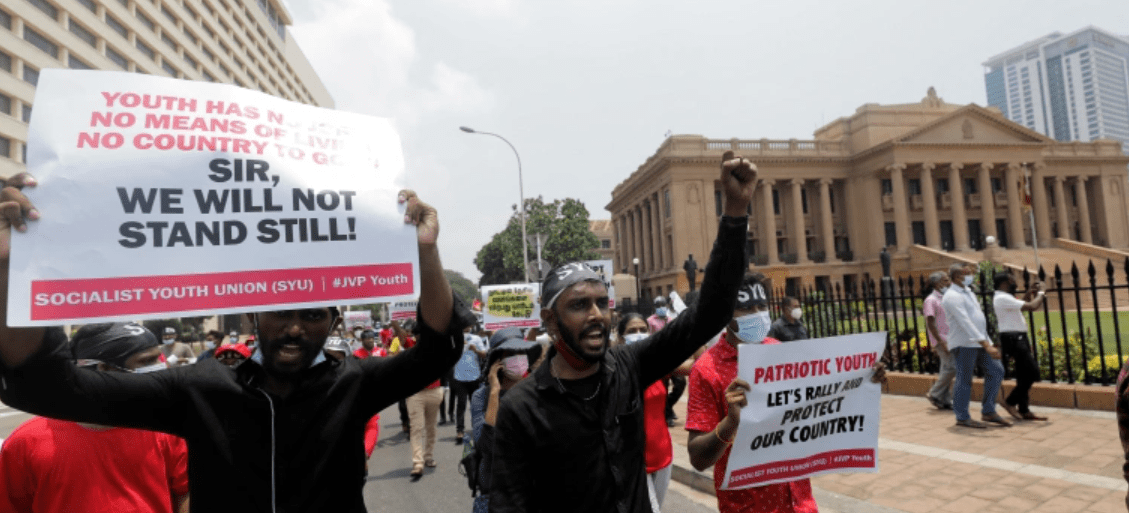By Joe Langabeer
Sri Lanka is currently in the throes of massive political and economic turmoil and has been for over a month. It is a level of unrest with revolutionary implications for the island and the whole of Southern Asia.
The people of Sri Lanka, including trade unionists, office workers, teachers, youth, women workers, have come out onto the streets in their hundreds of thousands, to protest a collapse in living standards and against corruption and the power held by one family.
“Protesters ranging from Catholic nuns to trade unionists” the Financial Times reported last Sunday, “gathered at the makeshift site along the seafront promenade in Sri Lanka’s capital, Colombo, defying a curfew imposed in recent days to press their demands for President Gotabaya Rajapaksa to quit”.
The Rajapaksas are heirs to Sri Lanka’s most powerful political dynasty and two brothers – President and Prime Minister – have lorded over a system rotten with corruption and nepotism. President Gotabaya Rajapaksa (“Gota”) has led the economy of Sri Lanka into debt and ruin, leading to persistent power cuts and a chronic shortage of all the necessities of daily life: food, paper, medicines and kerosene.
Entire cabinet resigned in the face of protests
His brother, Prime Minister Mahinda Rajapaksa, responded to the first protests by sending hired thugs as well police and military to crack the heads of protesters, only enraging the youth and workers even more. Such was the scale of the opposition developing that the entire Cabinet resigned that Gota ended up demanding his brother Mahinda follow them.
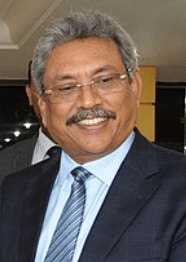
Gota has appointed an old politician, Ranil Wickremesinghe, without any basis of support in parliament or the country to his fifth term as Prime Minister. The first priority assigned to him by Gota will be convincing Sri Lanka’s debtors, the IMF and the Chinese state, that ‘all will be well’ and that Sri Lanka will be ‘stable’. The workers and youth of the island will have other ideas, when Wickremesinghe turns back to austerity and cuts.
Sri Lankan economy in a state of collapse
The economic turmoil and instability, which have been disastrous for the working class of Sri Lanka, are the culmination of decades of bureaucracy and corruption. Once considered an economic “success” story for Asian economies, Sri Lanka defaulted on its debts after burning through its foreign currency reserves (Financial Times, April 13), its economy tipped over the edge by the Covid pandemic and the collapse of tourism.
The country’s foreign currency reserves have fallen to below $2bn, dramatically limiting the most vital imports. This led to severe shortages of essential goods and extreme power cuts for twelve hours. The shortages of paper meant that newspapers couldn’t publish and students were unable to sit exams.
Sri Lanka’s defaulting on its international debts are the first time in any South Asian country for decades, and the first ever for Sri Lanka itself. The Finance Ministry suspended foreign debt payments, defending this action by saying they have to focus reserves on food and fuel imports. Meanwhile, further borrowing of $35bn and debt restructuring are being negotiated, which is inevitably mean even more cuts in living standards in the future.
The first president with a direct military background
The Sri Lankan economy is already Asia’s largest high-yield bond issuer, which means a higher than average transfer of wealth from the workers of the island to international financial institutions. The state borrowed heavily after the end of the 2009 civil war. When Gotabaya Rajapaksa came into power in 2019, the first president with a directly military background, his government introduced large tax cuts that further reduced the state’s revenue base. Then there was the massive blow to tourism income due to the pandemic.
The culmination of the heavy borrowing and tax and income cuts left Sri Lanka heavily dependent on international debt markets and when the state’s credit rating disappeared there was little way to pay for government services and imports.
New ‘relief’ loans negotiated from the IMF will be based on commitments to further ‘marketise’ the economy and that will ineviably means more cuts and insecurity for workers’ living standards. New loan conditions will focus on preserving the interests of capitalism by keeping taxes low and opening up Sri Lanka for overseas investors. There is little prospect that this would be any more successful that past policies and, more importantly, it offers nothing in the way of support for workers.
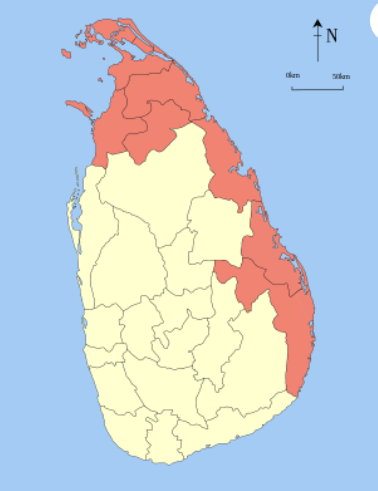
Legacy of a brutal civil war
One of the dangers in the current climate of mass opposition to the government is that the political right – and Gota himself – could use the ‘nationalist card’ to divide workers and split the opposition. Gota cut his teeth in his military career in the suppressionof the JVP youth uprising in the 1987-89 and in the civil war that lasted seventeen years up to 2009. There will be no shortage of voice willing to split the opposition by blaming the minority Muslim population or the Tamils for the economic crisis
The history of modern Sri Lankan governments has been one of regular oppression of both the workers’ movement and minority communities. Although the Tamil community live across the whole island, in the north and east they are a majority and the bitter civil war from 1983 to 2009 is still a recent memory.
Brutal civil war conducted by the state
The insurgency of the Tamil Tigers was aimed at the creation of an independent Tamil state in the north and east. It was a brutal civil war and the Sri Lankan military used killings, rape and torture on an industrial scale to cow the Tamil population into eventual submission. By the time the war ended, the death toll was estimated at around 80,000-100,000, and the legacy of that war is still very much alive.
The oppression of Tamils has been an chronic problem and the brutality of the state during the civil war was but an extension of that. Gatabaya dismissed war crimes as ‘misconceptions’ or brushed them off as fallacies. Gotabaya used his reputation as a military ‘hard man’ to run on a nationalist platform in 2019 and he won an overwhelming majority, largely among majority Sinhala voters and since that point he has minimised the role of the parliament and strengthened presidential powers.
Gota has conintued to ignore Tamil demands for justice over war crimes and indeed has pardoned some war criminals. With his brother as Prime Minister, he has had little parliamentary opposition up to the point of economic collapse. But the Tamil question will not go away and the Tamils’ right of self-determinatin for the eastern and northern provinces is something socialists have to recognise.
A socialist tradition runs deep in Sri Lanka
The socialist movement has long established roots in Sri Lanka. It was largely due to the pressure of the workers’ movement, and in particular the LSSP, the Lanka Sama Samaja Party, that in the period after independence Sri Lanka boasted a higher standard of literacy and social welfare than any other state in Southern Asia. The LSSP at that time found an echo not only within Sri Lanka itself, but across the straits in India.
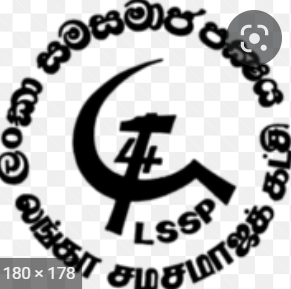
Speaking to an anonymous Indian socialist observing the situation, he states: “I would happily support the Lanka Sama Samja Party right now if I could. The oppression and corruption of both Modi and Rajapaksa have put our heritage, culture and communities to shame. I was not a Marxist. Since the protests, I am developing my thoughts and hope that Modi goes through the same struggles as Rajapaksa is going through now”.
The LSSP were one of the most successful components of the former Fourth International and at least in words accepted Trotskyist ideas. Unfortunately since those days it has split several times and each new iteration has been pushed in the direction of an opportunist policy, providing a ‘left cover’ for pro-capitalist parties. It was the leader of this once proud party, Tissa Vitharana, who was appointed as governor of the North Central Province by none other than Gotabaya Rajapaksa.
Where does Sri Lanka go from here?
Gotabaya Rajapaksa is trying now to cling to power for as long as he can, but he will not prevent the opening up of a long period of civil unrest. Capitalism does not have the means of solving its profound economic crisis and Sri Lanka will move from one convulsion to another in the coming months and years. It is an open question whether or not Gota will survive and if he does, it may be on the basis of an brutal military dictatorship on the lines of similar regimes in the past in Pakistan.
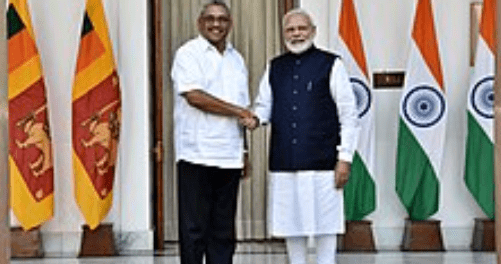
There can be no doubting the capacity of Sri Lankan workers to struggle in the coming months and years, but a key question that will need to be resolved is the question of leadership. Will there be a party or a movement that can give these coming struggles a sense of direction and purpose, a political programme that offers a line of march through the storms that will unfold, not least to forge a fighting unity between Sinhala, Tamil and Muslim workers. The only way forward for the Sri Lankan working class is a struggle for socialism.
Within the movement of the workers and youth there will inevitably be a groping towards socialist ideas with a resurgence of the best traditions of the LSSP. The trade union membership will be moving to get rid of the shackles placed upon it by successive governments to overcome the limitations of the union bureaucracy.
Inevitably at some stage, the question of mass strikes and a general strike will be posed, events that will raise the question of power even more sharply. Who will run society, a tiny minority of corrupt capitalists, bankers and landowners, supported by international financial institutions, or the working class of all nations and religions, organised through workers’ committees?
Capitalism offers fear, uncertainty and oppression
On the basis of capitalism there is no way forward for Sri Lankan workers. It is a future of fear, insecurity, economic uncertainty and oppression. You reap what you sow, and in the neo-liberal economy, has left Sri Lanka with some of the worst pollution levels on beaches and sewer systems anywhere in the world.
On the other hand, a socialist, planned economy can offer the promise of economic development in the interests of of all. It could offer a green industrial revolution in infrastructure, agriculture and social development on the basis of a publicly-owned economy. A movement towards socialism in Sri Lanka would have a huge effect on the working class in the giant state of India to the North.
Given the large Tamil population in India and the huge traditions of the Indian working class, a mass socialist movement in Sri Lanka would have an electrifying effect on its much larger neighbour. It would open the way for solidarity between Indian and Sri Lankan workers against two equally oppressive regimes.
The workers of Sri Lanka will be searching for answers. The overthrow of the Rajapaska dynasty is not the only issue, but the first of many. In the upheavals and convulsions that will sweep the country in the future, the workers will be looking to go beyond the limitations of capitalism and to break not only with his regime, but the whole rotten system that props him up.

